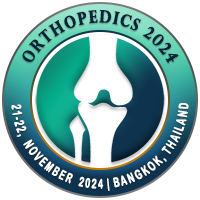
Sergey Arestov
Research Center of Neurology, Moscow, Russian FederationTitle : Advantages and weaknesses of percutaneous endoscopic lumbar discectomy: algorithm selection
Abstract
Having vast experience in portal endoscopic methods in lumbar spine – over 20 years now – we tried adapting endoscopic methods for cervical region. At 2012 we first tried performing portal endoscopic methods and now we accumulated enough experience to perform some analysis of out experience.
Material and methods. Our experience covers years from 2012 to 2014 and from 2015 to 2020.
We accumulated 28 patients in first period and
120 patients in second period. We measured 3 main aspects of endoscopic methods: 1) clinical effectiveness (using MacNab, VAS and EuroQual-5D scales before, after and 6 months after operation), 2) reoccurrence rate and 3) technical usability and capabilities of methods.
We compared with microsurgical methods wth 1 level anterior approach with cage fusion.
Results. According to our data after the operation patients after endoscopic operation had faster rehabilitation rates. We had only 2 cases of reoccurrence in endoscopic group, and we had 3 cases of worsening discs in anterior approach group.
Conclusion. We conclude that endoscopic minimally invasive approach is preferable to microsurgical anterior methods. But endoscopic methods have a vast amount of limitations concerning the endoscopic method’ abilities. We defined a small algorithm proposing the use endoscopic approach.
Biography
Sergey Arestov has completed his PhD at the age of 28 in Burdenko Neurosurgical Institute. He is a chief researcher in neurosurgical department of Research Center of Neurology in Moscow. The main aim of his research is complex treatment of degenerative vertebral disc diseases. He has over 100 publications and his publication h-index is 10.

